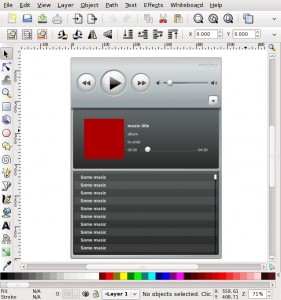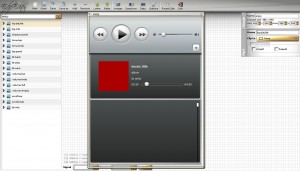Next week Ulisses, Luis Felipe and I will be at "Semana da Mobilidade" (Mobility Week), to be held at USP São Carlos, Brazil.
This is a great thing because we'll be able to talk about Maemo and Python to undergrad students and try to show there is life (and paid jobs/work) beyond Windows and Java, .Net and Delphi. We already did a talk similar to that for UNICAMP students (although it was an informal talk) and attendees liked it.
I'll present both a talk and a training. I plan to show how GNU/Linux development happens on desktop, how it needs to be changed for manual cross-compiling and how Maemo (mostly scratchbox) helps with that, then cover other changes, like Hildon-ization and hints on how to change user interface to make it usable for high-dpi but small screens, then say how Python can cut to the chase and avoid most of these troubles. This is a talk, so nothing will be in-depth. As for the training, I plan to go step-by-step scratchbox on the first day, cross compiling and port on the second and Python development on the third (4hours/day). Any ideas or suggestions?
Ulisses will discuss more generally life outside Windows-Java environment, trying to get students willing to work with GNU/Linux and open source in general. I'm not sure about other countries, but here in Brazil lots of students completely reject learning these Free/Open Source technologies because they think there is no opportunity to get paid to do such thing, so they focus on proprietary world, mostly on Windows and Java or .Net.
Luis will run the "Python for s60" training, a hands-on training, covering the basics, how to send and run scripts on the phone, then go through some API to demo capabilities, then some real development.
Last but not least, this mark the start of a great partnership between INdT and ProFUSION.
- Post Date
- 2008-09-27 02:33
- Categories
- Tags
Today I read on Trolltech Labs Blogs a great post from Samuel Rødal about how to get translucent widgets on X11 with Qt's newest snapshot. Then I thought that if people find it cool to have such thing, why not say how to do the same in EFL?
EFL here is just Evas, Ecore and Edje. Evas does support rendering to semi-transparent buffers, including ARGB windows. Ecore and it's sub-libraries Ecore-X and Ecore-Evas know how to create ARGB windows since a long time, just use ecore_evas_alpha_set(ee, 1) if you have composite manager or ecore_evas_shaped_set(ee, 1) if you don't (it will be the best you can achieve on low end hardwares). Edje is just used to provide fancy button-like object without trouble, if you like Qt, then try QEdje.
My code is available at http://barbieri-playground.googlecode.com/svn/efl-tests/transp-bg/ and it requires a recent version of Ecore, not because of alpha/translucent support, but because I just added the helper ecore_evas_new(). If you have an older version, try to replace it with ecore_evas_software_x11_new(NULL, 0, 0, 0, 320, 240). Why I did used that function? First because I wanted to blog about it, second because it will make the same effect work elsewhere, like Windows and DirectFB ;-)
- Post Date
- 2008-09-23 20:35
- Categories
- Tags
We just published at ProFUSION news (shameless plug!) that we finished the port and packaging of Enlightenment DR17 on Freescale's i.MX31 development board. Packages were sent to LTIB mail list and are pending inclusion into official repository.
Hardware is very similar to Nokia N810, but with a smaller screen. Software runs smooth, but it's not usable out-of-the-box, with dialogs being too big and general hit areas too small (border buttons, etc), that's why we plan to port Illume soon, as well as Python-EFL so maybe someone can try to run Canola on it ;-)
- Post Date
- 2008-09-23 00:37
- Categories
- Tags
One of the most boring work while doing Edje is having to measure all the parts and write them on your EDC files. It's also very error prone. So why not make it automatic?
This idea is not new and at INdT we did that, for Gimp, where designers handle developers PSD (Photoshop) files and they open these in Gimp, outputting as edc using this script by Renato Chencarek.
Now at ProFUSION we're finishing the UI of Enjoy, a music player to demo the power of Guarana framework (to be released soon!). I did the design using Inkscape, so I was wondering that I could join Renato and write an Inkscape-to-EDC converter, and here it is! Both files are now in E SVN under edje/utils.
If you like screenshots, here they are. You can also have a glimpse of Enjoy look (hey, I'm a developer, not a designer, so don't shoot me! however suggestions are appreciated):
I hope this can help other EFL developers out there. I know some Maemo, OpenMoko and even aMSN guys are using it now.
Update#1: You need both inkscape and/or gimp to use the scripts.
Update#2: Scripts are written in Python, so you need it too.
- Post Date
- 2008-09-16 20:27
- Categories
- Tags
This week ProFUSION released Evas DirectFB engine, adding it back to SVN. While engine is functional, it's not as fast as it could be and Denis Oliver Kropp is looking at this, that seems to be related to pre-allocated surfaces not being accelerated by DirectFB. You can work around this by using Evas software engine, that is very fast, just define DFB_USE_EVAS_IMAGE_DRAW.
Announcements:
Next steps are to provide EWL and ETK engines, just need some time to work on them.
- Post Date
- 2008-09-15 00:47
- Categories
- Tags

